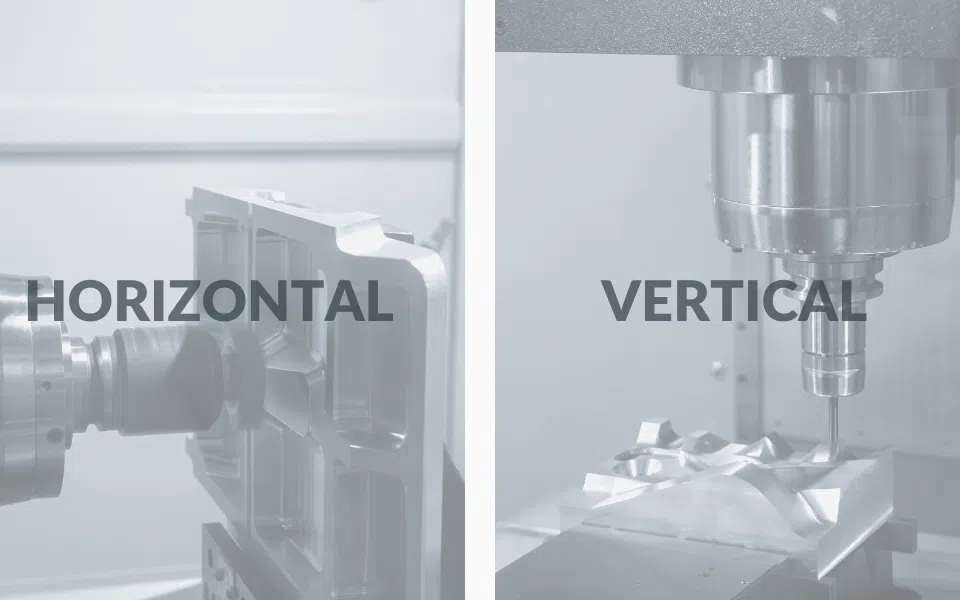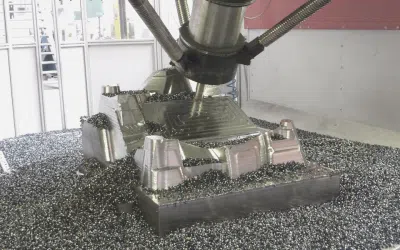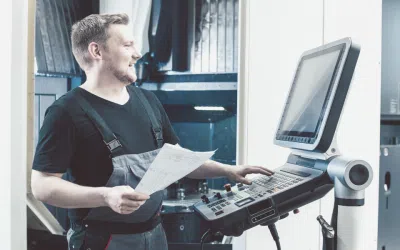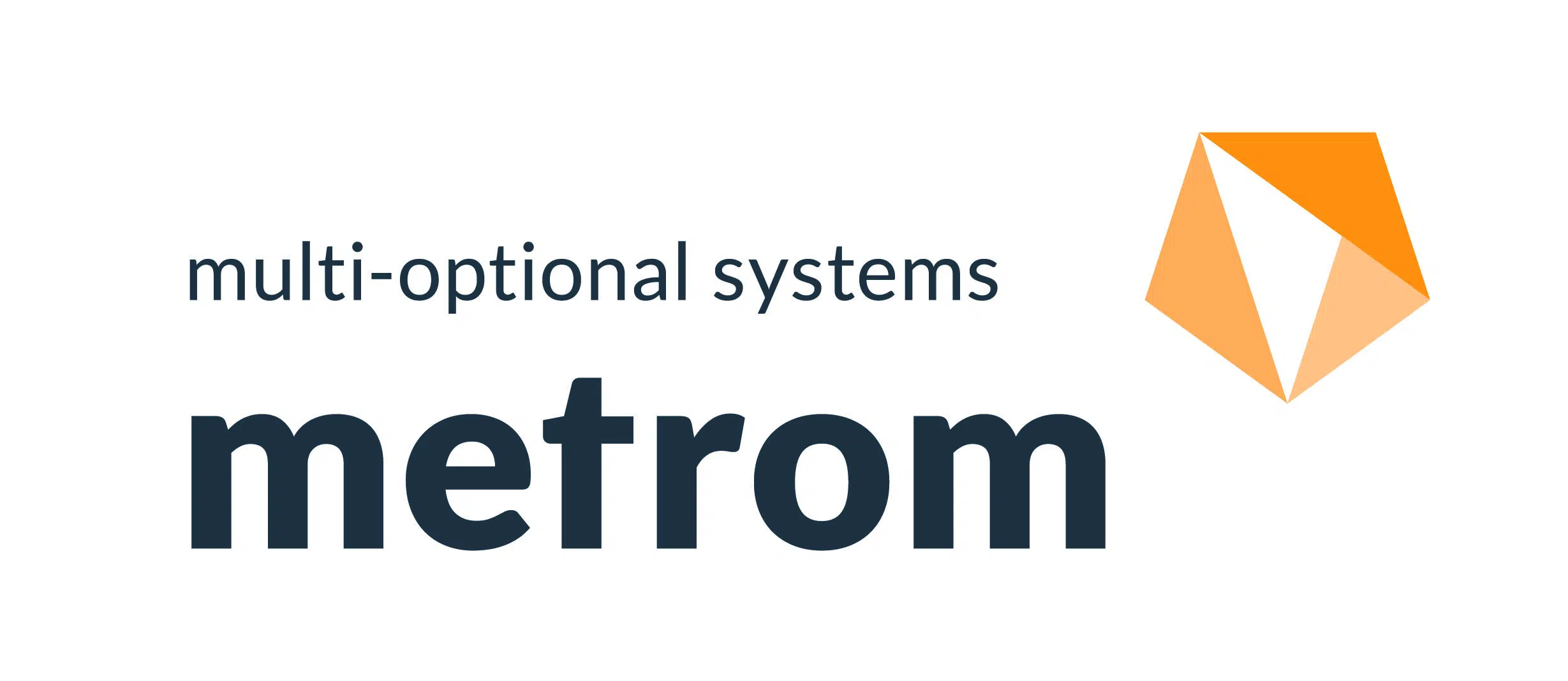Directory
- Types of CNC milling machines
- Which type of CNC machine is best for you?
- METROM’s Pentapod as a unique CNC machine type
- Conclusion
There are different types of milling machine used for machining metal, plastic or wood. The first NC machines (Numerical Control machines) were developed in the 1960s. Today, thanks to the advancement of technology, CNC machines can perform precise milling operations. For example, CNC machines are used for the production of any components in aerospace, automotive, medical technology, onshore and offshore or container construction.
CNC machines basically differ in terms of the structure and size of the milling machine, the table and the type of movement. Most CNC machines are vertical in design because this design is simpler and most of the work can be done. However, the horizontal machine tools are more suitable for certain milling jobs.
This article will cover basically the different types of milling machines to give you an overview of the different options and the advantages of each.
Types of CNC milling machines
In this section, we will look at which machine types are differentiated by their basic design. The position of the CNC spindle in relation to the machine table will be considered. In conventional machines, until today, the vertical position was used first, as this makes the work easier for the operator. In modern machines, a horizontal CNC design is now often used, since this position has certain advantages. But what advantages do both designs have?
Vertical CNC milling machines
Vertically mounted CNC machines are the most common type of machine tools. These machines are easier to set up and can be used for most milling jobs. Under vertical understandable is that the spindle is in a perpendicular position to the worktable.
The movement is mainly achieved by the work table, which is located under the machine spindle. The conventional machines have a table that moves in the X and Y directions. The Z axis is usually located in the spindle. However, in modern CNC mills, the Z-axis may be integrated into the table. Likewise, the table is equipped with a rotary-tilt function so that it can move in all directions and enable multi-axis machining.
Advantages of vertical CNC machines
One of the biggest advantages is the clarity, as the work table is located under the spindle. This allows the operator to see exactly what he is milling. This is a great advantage, especially for more precise milling work.
Thus, it can also be stated that the vertical machines are more user-friendly. These machines are the most frequently purchased and used CNC milling machines. Thus, it is also easier to find qualified machines for this type of milling machine.
A final equally important advantage is that the vertical milling machines are usually less expensive and are likewise more common on the market.
Horizontal CNC milling machines
Horizontal CNC milling machines are rare, because this design is more complex and usually requires more space. The spindle is arranged in a horizontal position to the worktable. The movement is performed by the spindle, while the work table remains relatively stationary. However, here too, the table is usually equipped with a tilt and swivel function to enable multi-axis machining.
Advantages of horizontal CNC machines
Even though the horizontal machine tools are rare, there are still some advantages that speak for this type of machine.
First of all, it is important to mention that the horizontal CNC machines are able to perform larger milling operations. This is mainly due to the fact that the spindle is in a horizontal position. Thus, larger workpieces can be clamped into the milling machine.
Another advantage is that the horizontal CNC milling machines can usually reach higher speeds. Here it is also possible to mill in parallel, which is not possible with the vertical milling machines.
Which type of CNC machine is best for you?
Now that you know the advantages and disadvantages of the two types of CNC milling machines, you need to decide which one is best for you. In this section, we will list some points that can help you decide.
Depending on your needs
The first question you should ask yourself is: what kind of work do you want to do with the router? If you want to mill large workpieces, a horizontal CNC machine the best choice. However, if you want to mill smaller or medium-sized workpieces, a vertical CNC machine is a better choice.
In other words, don’t leave the choice to chance, think about what kind of work you want to do with the router. Also, pay attention to the footprint you have for the machine. If you don’t have much space, a vertical milling machine is the right choice. Last but not least, pay attention to equipment and control software.
Depending on your experience
Deciding on the best milling machine also depends on your experience. If you’re new to the milling world, a vertical machine tool is the best choice. These routers are easier to set up and operate. They are also less expensive and more common on the market. However, if you already have experience with machine tools, you may want to consider a horizontal CNC machine tool. These routers are ideal for larger and more complicated milling jobs. Your CNC machinist should be able to help you decide which router is best to use.
Depending on your budget
Your budget is also an important factor when deciding on the best CNC machine. If you don’t want to spend a lot of money, a vertical CNC machine is the best choice. These machine tools are less expensive and more common on the market. However, if you are willing to spend more money, you can also consider a horizontal milling tool. These are ideal for larger and more complicated milling jobs. But also consider the previously mentioned points before choosing a machine.
METROM’s Pentapod as a unique CNC machine type
Our Pentapod machines are unique from the ground. Because these can basically not be assigned to the vertical or horizontal design. Because the movement of the entire spindle allows in one machine the vertical as well as horizontal position or machining. This is due to the special parallel kinematics with 5 ball screws. This allows the spindle to be tilted up to 90 degrees.

The application of our machines thus allows a highly flexible production. At the same time, the machine can quickly adapt to components and process materials of any kind. These machines are able to machine very hard to very rough materials with high precision. In this regard, we have been inclined to the environment for several years, so we have specialized our Pentapod CNC machines for dry machining.
However, with the PM-Series, a vertical and horizontal position is possible. However, this is the entire conversion of the machine to a vertical or horizontal frame. Here the vertical frame is mostly used for mobile machining of large components. However, to use the machine like a CNC milling center, the complete CNC machine can be positioned on a horizontal rack. But the mobile machine can even be placed on the component or other device.
Conclusion
Now that you know the pros and cons of the two types of CNC milling machines, it’s time to make a decision. Think about what kind of work you want to do with the router. Also, pay attention to the footprint you have for the router. If you don’t have a lot of space, a vertical milling machine is the right choice. Last but not least, pay attention to equipment and control software. If you’re willing to spend more money, you can also consider a horizontal machine.
These routers are ideal for larger and more complicated milling jobs. You should also keep in mind that the horizontal CNC machine can usually reach higher speeds. Here it is also possible to mill in parallel, which is not possible with the vertical machines. So think carefully about your decision and choose the router that best suits you and your needs.
In summary, there are different types of CNC machines. You have to decide on the best type for you. In this section, we have listed some points that can help you decide. Depending on your needs, experience and budget, you can find the best CNC router for you. So, think carefully and make the best choice for you. Good luck with your milling!








